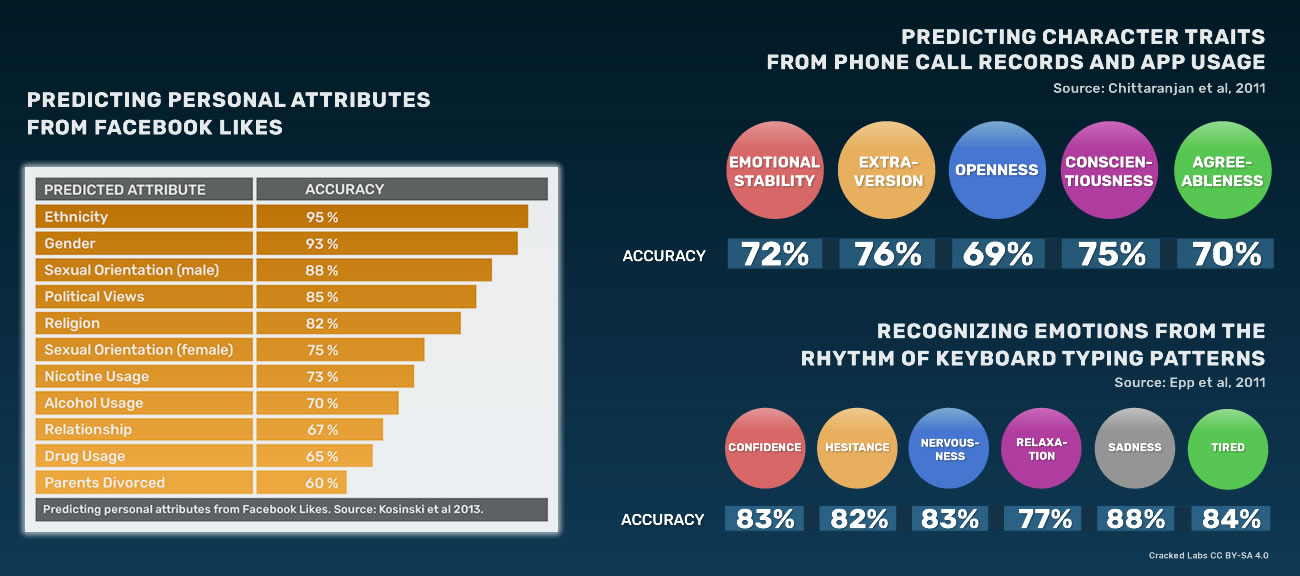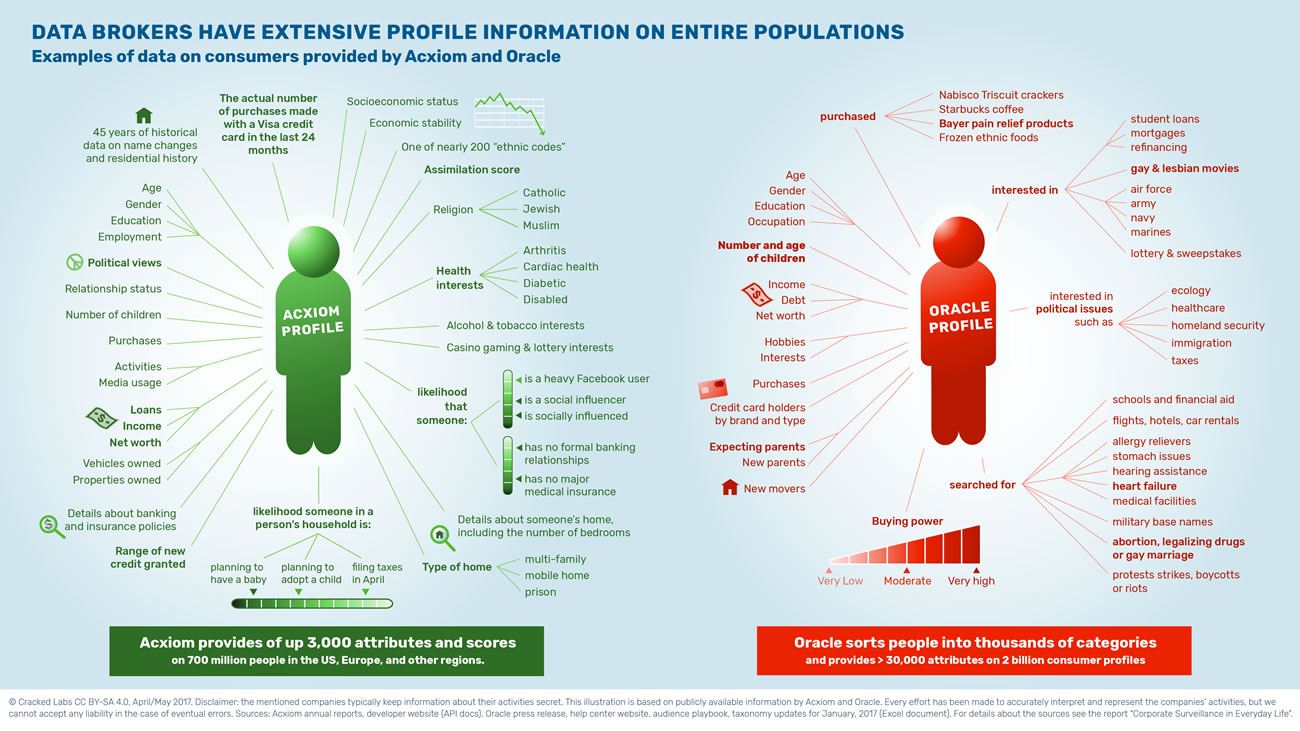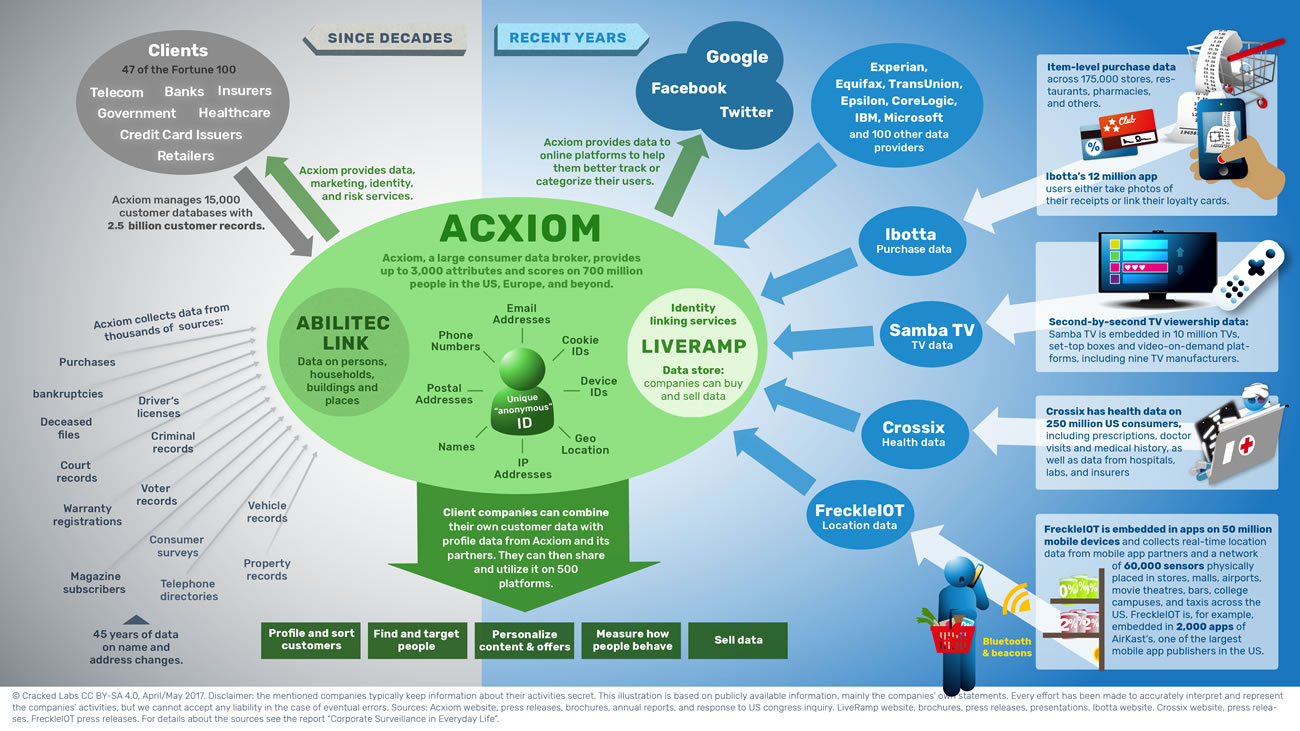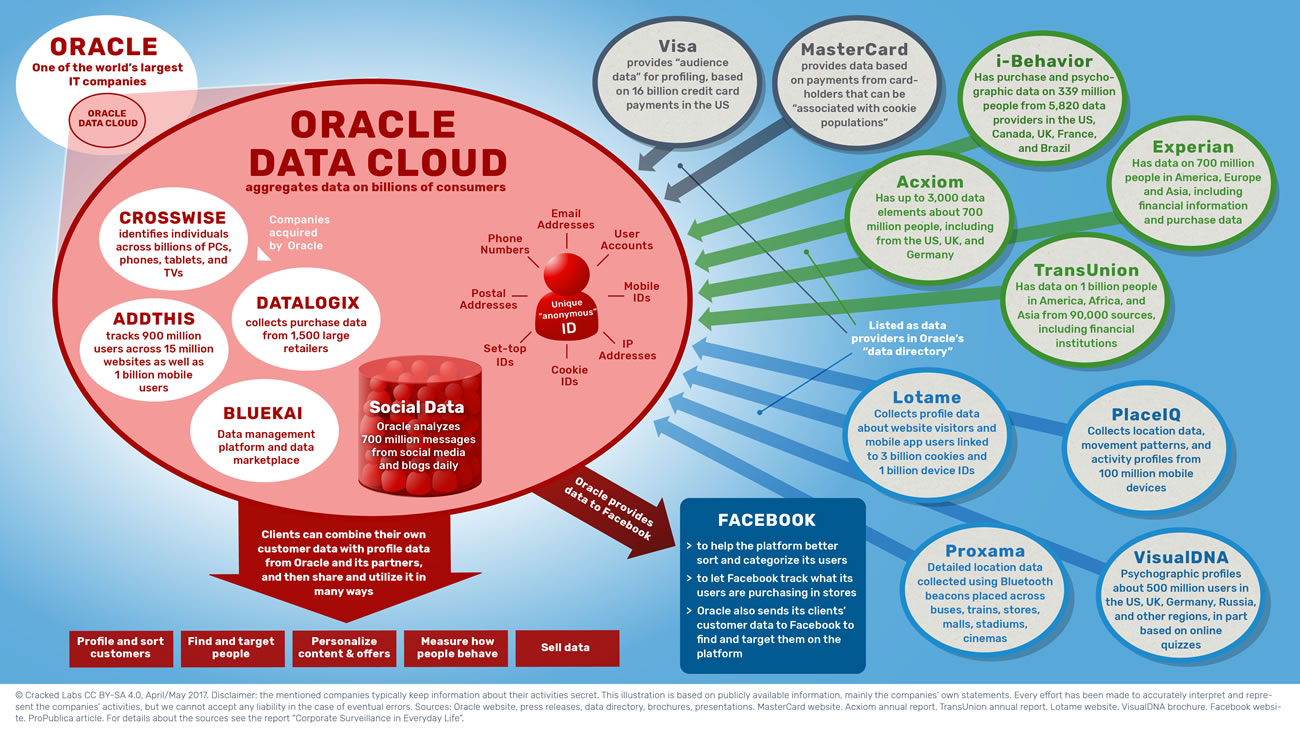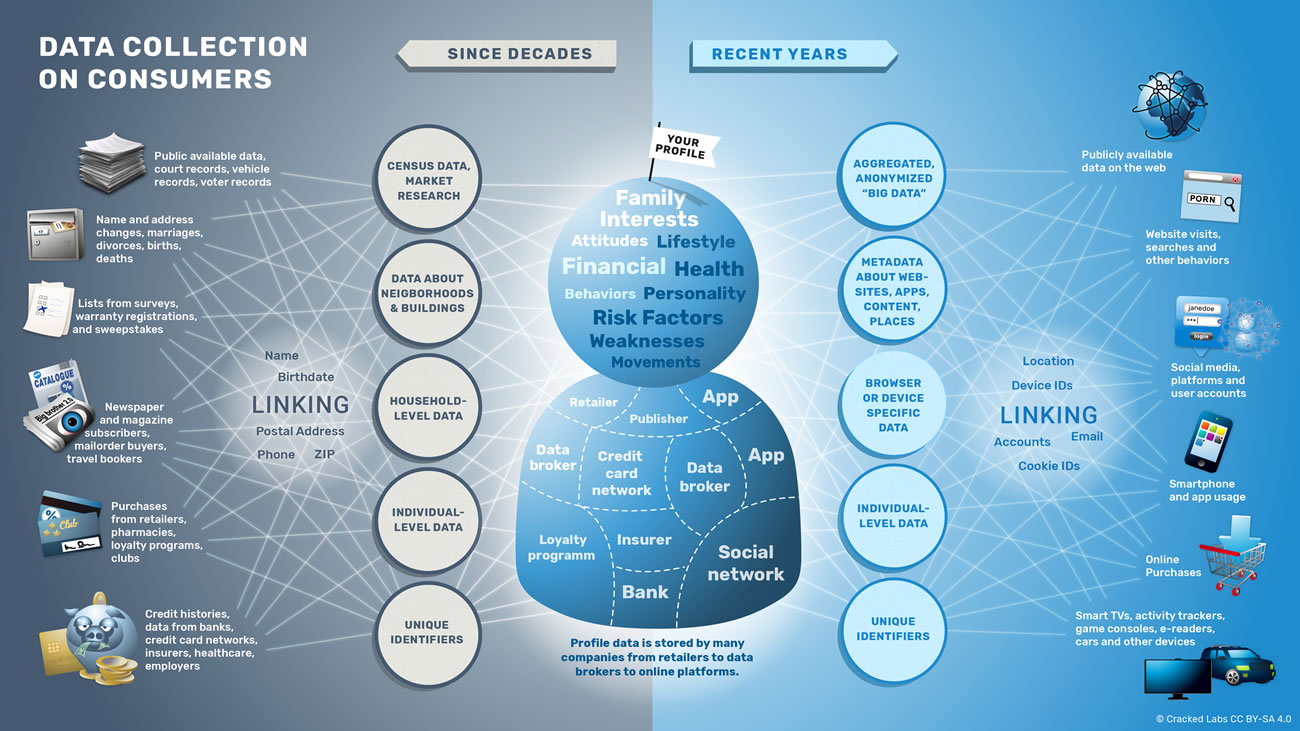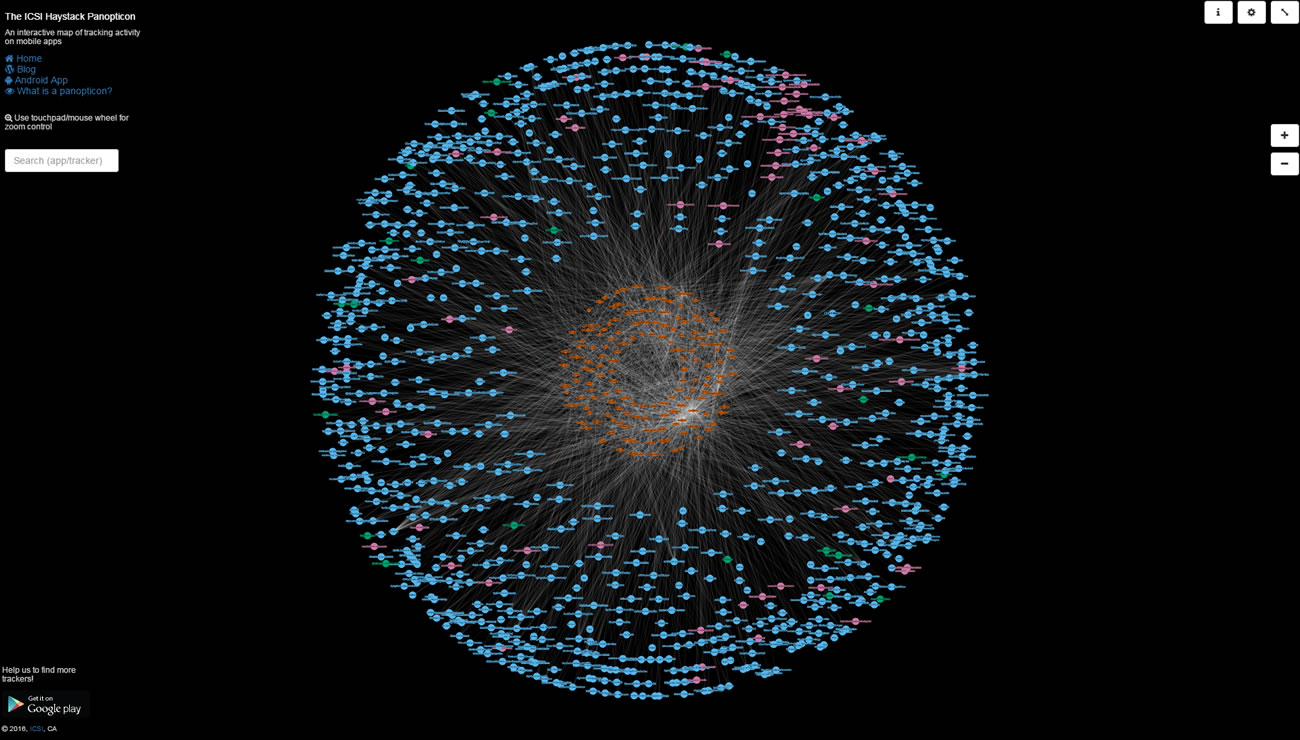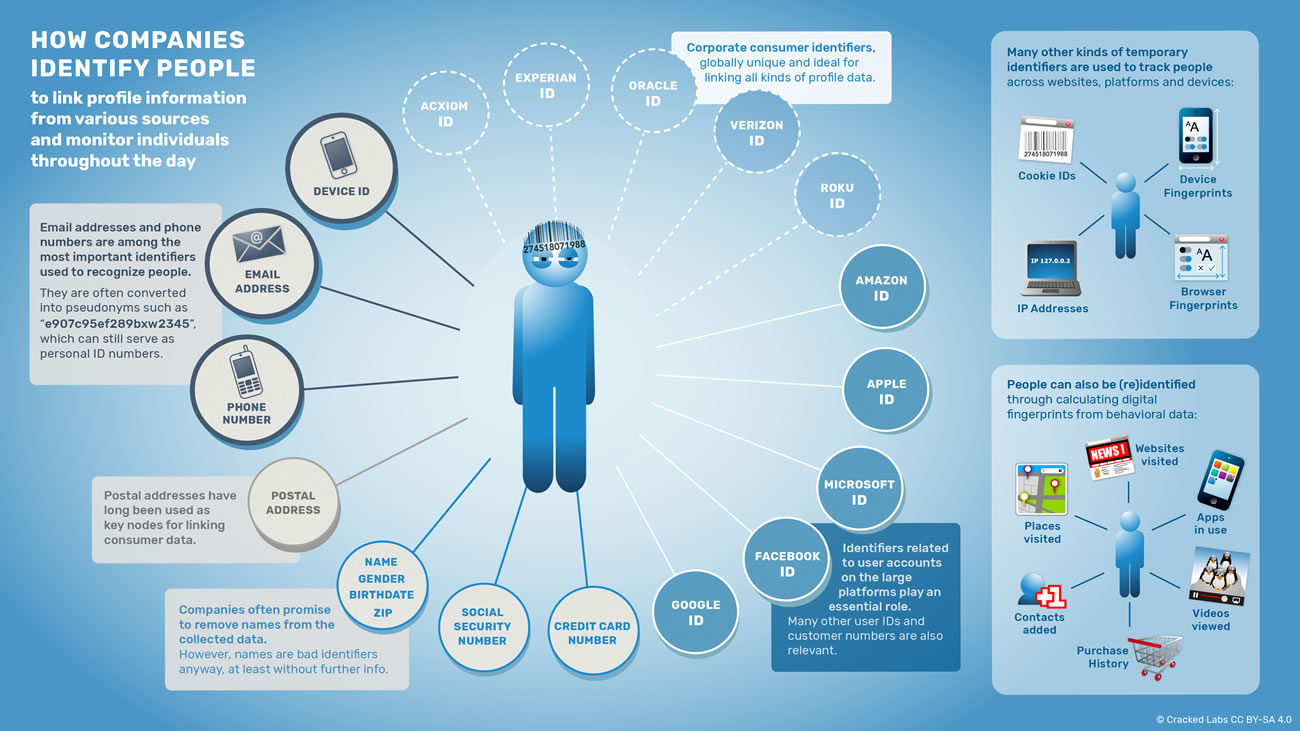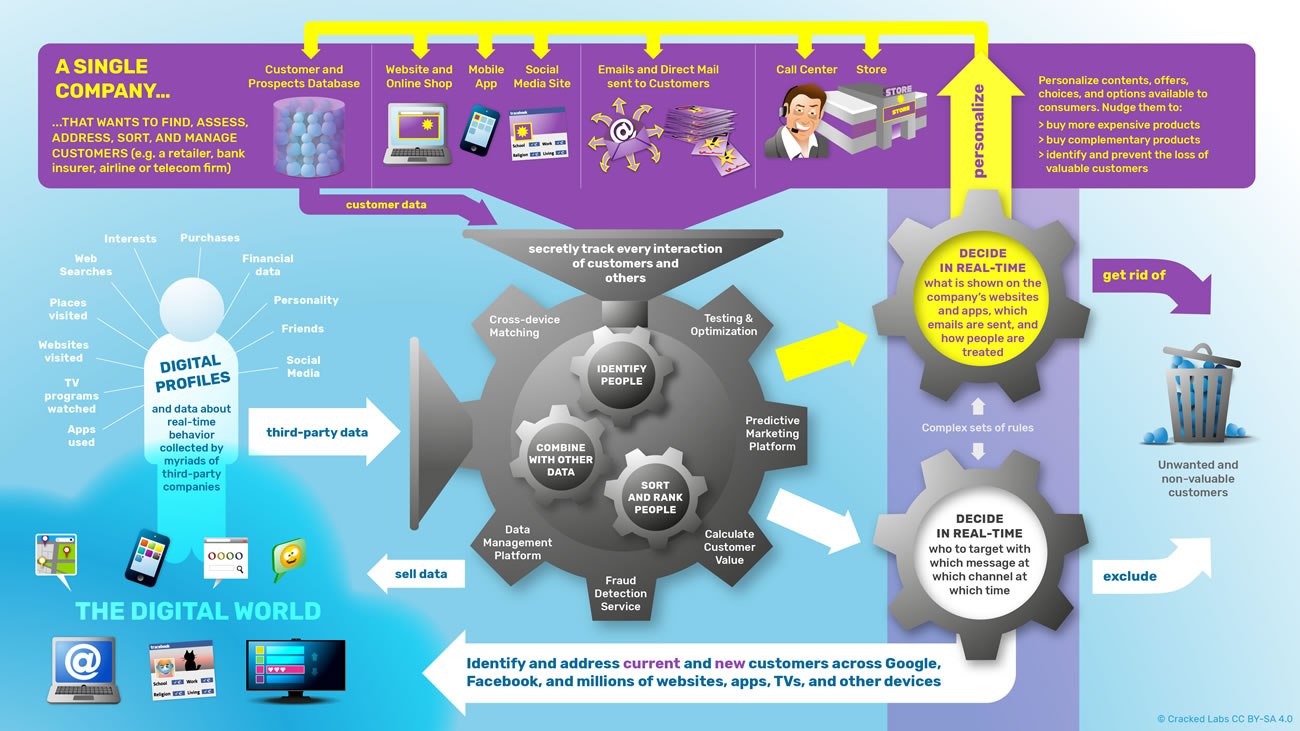Google and Facebook, followed by other large platforms such as Apple, Microsoft, Amazon
and Alibaba have unprecedented access to data about the lives of billions of
people. Although they have different business models and therefore play
different roles in the personal data industry, they have the power to widely dictate
the basic parameters of the overall digital markets. The large platforms mostly
restrict how other firms can directly obtain their data; in this way, they
force them to utilize the platform’s data on users within their own
ecosystems and gather additional data from beyond the platforms’ reach.
Although the large multinationals in
different sectors that have frequent interactions with hundreds of millions of
consumers are in a somewhat similar position, they not only acquire consumer
data collected by others, but often also provide data. While parts of the
financial services and telecoms sectors, as well as crucial societal areas
such as healthcare, education, and employment, are subject to stronger privacy
regulation in most jurisdictions, a wide range of companies has started to
utilize or contribute data to today’s networks of commercial surveillance.
Retailers
and other companies that sell products and services to consumers mostly also
sell data about their customers’ purchases. Media conglomerates and digital publishers
sell data about their audiences, which is then utilized by companies in most
other sectors. Telecom and broadband providers have started following
their customers through the web. Large companies in retail, media and telecom have
acquired or are acquiring data, tracking, and advertising technology firms.
With Comcast acquiring NBC Universal, and AT&T most likely acquiring Time
Warner, the large telecoms in the US are also becoming giant publishers,
creating powerful portfolios of content, data, and targeting capabilities. With
its acquisition of AOL and Yahoo, Verizon also became a “platform”.
Financial institutions have long used data on consumers for risk management, such as
credit scoring and fraud detection, as well as for marketing, customer acquisition,
and retention. They supplement their own data with external data from credit reporting
agencies, data brokers and marketing data companies. PayPal, the biggest
name in online payments, shares personal information with more than 600
third parties including other payment providers, credit reporting agencies,
identity verification and fraud detection companies, as well as with the most
advanced players within the digital tracking ecosystems. While credit card
networks and banks have shared financial data on their customers with risk data
providers for decades, they have now started selling transactional data
for marketing purposes.
A myriad of smaller and larger firms
providing websites, apps, games, and other applications are closely
connected to the marketing data ecosystem. They use services that allow them to
easily transmit data about their users to hundreds of third-party services.
Many of them sell their users’ behavioral data streams as a core part of their
business model. Even more worryingly, companies that provide new kinds of
devices such as fitness trackers also seamlessly embed
services that transfer user data to third parties.
The pervasive real-time surveillance
machine that has been developed for online advertising is rapidly
expanding into other fields including politics, pricing, credit scoring, and
risk management. Insurers all over the world have started to offer their
customers programs involving
real-time tracking of behaviors such as car driving, health activities, grocery
purchases, or visits to the fitness studio. New players in insurance
analytics and financial technology predict individual health risks based on
consumer data, as well as the creditworthiness of individuals based on
behavioral data on phone calls or web searches.
Consumer data brokers, customer management companies, and advertising agencies such as
Acxiom, Epsilon, Merkle or Wunderman/WPP play a major role in combining and
connecting data between platforms, multinationals, and the advertising
technology world. Credit reporting agencies like Experian that provide
many services in very sensitive fields such as credit reporting, identity
verification and fraud detection also play a major role in today’s pervasive
marketing data ecosystem.
Particular large companies that provide data,
analytics, and software services have been named as “platforms” as well. Oracle,
a large database and business software provider, has become a consumer data
broker in recent years. Salesforce, the market leader in customer
relationship management that is managing the customer databases of millions of
clients, yet having many customers each, has acquired
Krux, a major data company connecting and combining data all over the digital
world. The software company Adobe also plays an important role
in profiling and advertising technology.
In addition, most major companies in business
software, analytics and consulting, such as IBM, Informatica, SAS, FICO,
Accenture, Capgemini, Deloitte, and McKinsey, or even intelligence and
defense firms such as Palantir, also play a significant role in the
management and analysis of personal data, from customer relationship management
to identity management to marketing to risk analytics for insurers, banks, and
governments.
X. Towards a society of pervasive digital social control?
This report finds that the networks of
online platforms, advertising technology providers, data brokers, and other businesses
can now monitor, recognize, and analyze individuals in many life situations.
Information about individuals’ personal characteristics and behaviors is
linked, combined, and utilized across companies, databases, platforms, devices,
and services in real-time. With the actors guided only by economic goals, a data
environment has emerged in which individuals are constantly surveyed and
evaluated, categorized and grouped, rated and ranked, numbered and quantified,
included or excluded, and, as a result, treated differently.
Several key developments in recent
years have rapidly introduced unprecedented new qualities to ubiquitous
corporate surveillance. These include the rise of social media and networked
devices, the real-time tracking and linking of behavioral data streams, the
merging of online and offline data, and the consolidation of marketing and risk
management data. Pervasive digital tracking and profiling, in combination with
personalization and testing, are not only used to monitor, but also to
systematically influence people’s behavior. When companies use data
about everyday life situations to make both trivial and consequential automated
decisions about people, this may lead to discrimination, and reinforce
or even worsen existing inequalities.
In spite of its omnipresence, only the tip
of the iceberg of data and profiling activities is visible to individuals. Much
of it remains opaque and barely understood by the vast majority of people. At
the same time, people have ever fewer options to resist the power of this
data ecosystem; opting out of pervasive tracking and profiling has
essentially become synonymous with opting out of modern life. Although
corporate leaders argue that privacy
is dead (while caring
a great deal about their own privacy), Mark Andrejevic suggests that people do indeed
perceive the power asymmetries of today’s digital world, but feel “frustration
over a sense of powerlessness in the face of increasingly sophisticated and
comprehensive forms of data collection and mining”.
In light of this, this report focused on
the actual practices and inner workings of the contemporary personal data industry.
While the picture is becoming clearer, large parts of the systems in place
still remain in the dark. Enforcing transparency about corporate data practices
remains a key prerequisite to resolving the massive information asymmetries
between data companies and individuals. Hopefully this report’s findings will
encourage further work by scholars, journalists, and others in the fields of
civil rights, data protection, consumer protection, and, ideally, also of
policymakers and the companies themselves.
In 1999, Lawrence Lessig famously predicted
that left to
itself, cyberspace will become a perfect tool of control shaped primarily by
the “invisible hand” of the market. He suggested that we could “build, or
architect, or code cyberspace to protect values that we believe are
fundamental, or we can build, or architect, or code cyberspace to allow those
values to disappear”. Today, the latter has nearly been made reality by the
billions of dollars in venture capital poured into funding business models
based on the unscrupulous mass exploitation of data. The shortfall of privacy
regulation in the US and the absence of its enforcement in Europe has actively
impeded the emergence of other kinds of digital innovation, that is, of
practices, technologies, and business models that preserve freedom, democracy, social justice, and
human dignity.
On a broader level, data protection
legislation alone will not mitigate the consequences that a data-driven world
has on individuals and society, whether in the US or Europe. While consent and choice are crucial
principles to resolve some of the most urgent problems of intrusive data collection,
they can also produce an illusion
of voluntariness. Besides additional regulatory
instruments such as anti-discrimination, consumer protection, and competition
law, it will generally require a major collective effort to realize a
positive vision for a future information society. Otherwise, we might soon end
up in a society of pervasive digital social control, where privacy becomes – if
it remains at all – a luxury commodity for the rich. The building blocks are already
in place.
Further reading:
- A more comprehensive take on the issues covered
in the web publication above, as well as references and sources, can be found
in the full report, available as a PDF
download.
- The 2016 report "Networks of Control" by Wolfie Christl
and Sarah Spiekermann, which the current report is largely based on, is
available as a PDF download and as a printed book.
The production of this report, web materials, and illustrations was supported by the Open Society Foundations.





